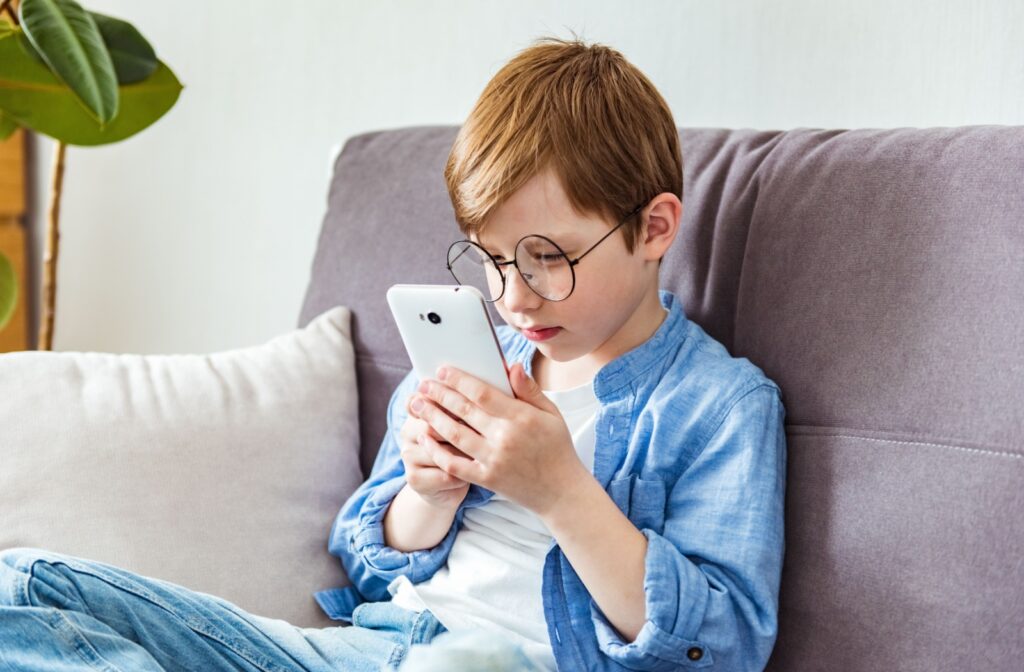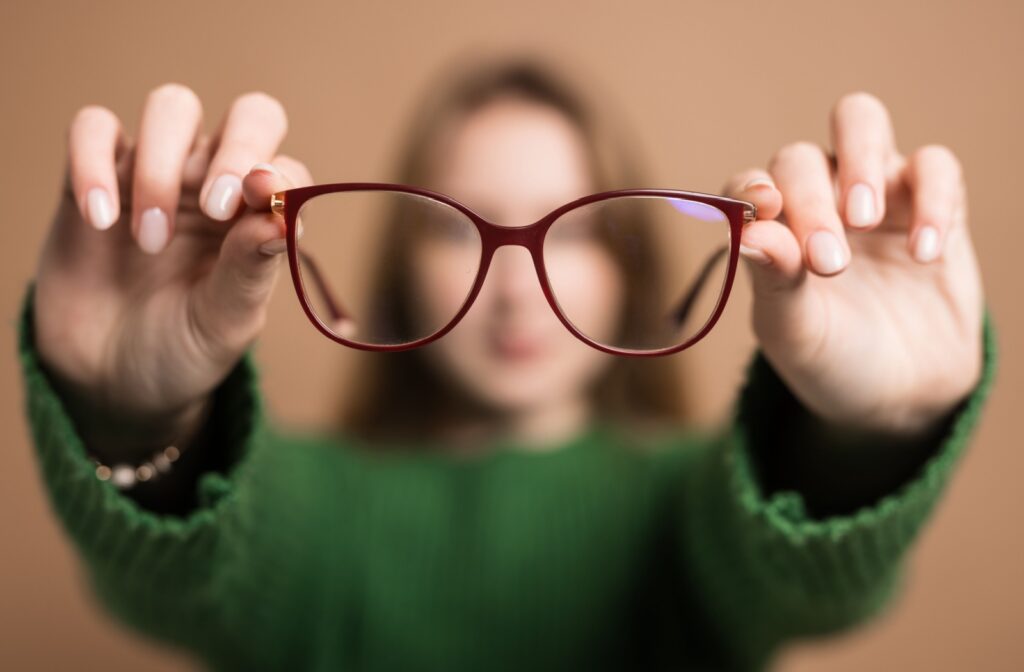Imagine your child squinting to see the blackboard or holding a book overly close to their face. These are everyday scenarios that many parents witness, often without realizing their child might be struggling with myopia. Your optometrist can diagnose this vision problem with an eye exam, but what then?
In a world filled with screens, myopia is becoming increasingly prevalent among children and adults alike, affecting not just vision, but quality of life and daily activities. Myopia cannot be reversed, but treatment can slow its progression in children and correct blurry vision in adults.
What Is Myopia?
Myopia (also known as nearsightedness) is a common refractive error that affects the eye’s ability to focus on distant objects, making them appear blurry while nearby objects remain clear. This condition occurs when the eye grows too long from front to back, or when the cornea (the eye’s protective outer layer) is too curved.
In a healthy eye, light moves easily through the cornea and the crystalline lens, focusing on the layer of light-sensitive cells at the back of the eye called the retina. The retina passes this information along, giving your brain a clear image. But when myopia changes the eye’s shape, this can cause light rays to focus in front of the retina instead of directly on it, resulting in blurry distance vision.
Myopia often begins in childhood and can progress as one ages before stabilizing around 20. Children with myopia may experience worsening vision as their eyes continue to grow. It’s vital to monitor and manage myopia early to prevent it from escalating into high myopia, which increases the risk of further complications later in life. Some of these complications include:
- Retinal detachment
- Glaucoma
- Cataracts
- Macular degeneration
Experts aren’t entirely sure what causes myopia, though it’s getting more common, with around 30% of people being myopic. Genetics may play a significant role—if one or both parents are myopic, their children have a higher likelihood of developing the condition. Prolonged near work, like reading or using digital devices, or simply not getting enough time outdoors may also increase the risk of myopia in children.
Spotting Myopia in Children
Children may not always express difficulties with their vision, either because they assume everyone experiences the world similarly or because they lack the vocabulary to describe their symptoms. After all, if all you’ve ever known is blurry vision, who’s to say that’s not how everyone sees things? Instead, parents and caregivers may be the first ones to notice signs of myopia, such as:
- Squinting to see distant objects clearly
- Holding books or screens very close to the face
- Complaints of headaches or eye strain
- Difficulty seeing the board at school
- Short attention span or trouble focusing
- Frequently rubbing eyes or blinking excessively
Our eyes constantly change as we age, meaning that kids need to get regular eye exams so that we can keep up with their growth. Diagnosing a problem like myopia before a child enters school is one of the best ways to set them up for academic success. In fact, myopia can affect a child’s learning so much that it’s common for doctors to misdiagnose vision problems as learning disabilities.
By paying attention to these signs, you can help your children receive timely evaluation and appropriate guidance from an eye care professional.

How Do You Treat Myopia?
Myopia physically changes the eye’s shape, and there’s currently no way for optometrists to undo that change permanently. However, we can get close to turning back the clock!
The most common way to correct myopia is with glasses or contact lenses. The idea behind these wonderful tools is shockingly simple: change how light enters the eye to refocus it directly onto the retina, improving distance vision clarity. Laser eye surgery, like LASIK or PRK, offers a more permanent solution by reshaping the cornea. While this doesn’t “reverse” myopia, it accommodates the eye’s irregular shape.
Laser eye surgery isn’t suitable for everyone. Because it changes the cornea physically, you have to have a stable prescription or else your myopia will likely worsen again. This procedure requires careful consideration and consultation with a qualified professional.
Corrective eyewear can also benefit children, but that may just be the first step. Glasses can correct their vision, but they’ll have to keep updating their prescription as their sight worsens. Myopia is progressive, but that doesn’t mean there’s nothing we can do. Myopia control strategies are becoming increasingly important and can help slow down myopia’s progression.
By reducing the rate at which myopia worsens, your child could enjoy better vision down the road.
Don’t Let Myopia Control Your Life
Understanding myopia and its effects on vision is the first step toward better eye health. While myopia can’t be reversed, proactive management can significantly improve the quality of life for both children and adults. Early detection and treatment are crucial for getting the most out of your vision and preventing potential complications associated with myopia.
If you think your child has myopia, or you have concerns about your own vision, our friendly team at White Oaks Optometry has your back! Your eye health matters, and we’re ready to assist you on this important journey. Book an appointment with us today and discover how our professional care can make a difference in your visual experience. Your clear vision awaits!



